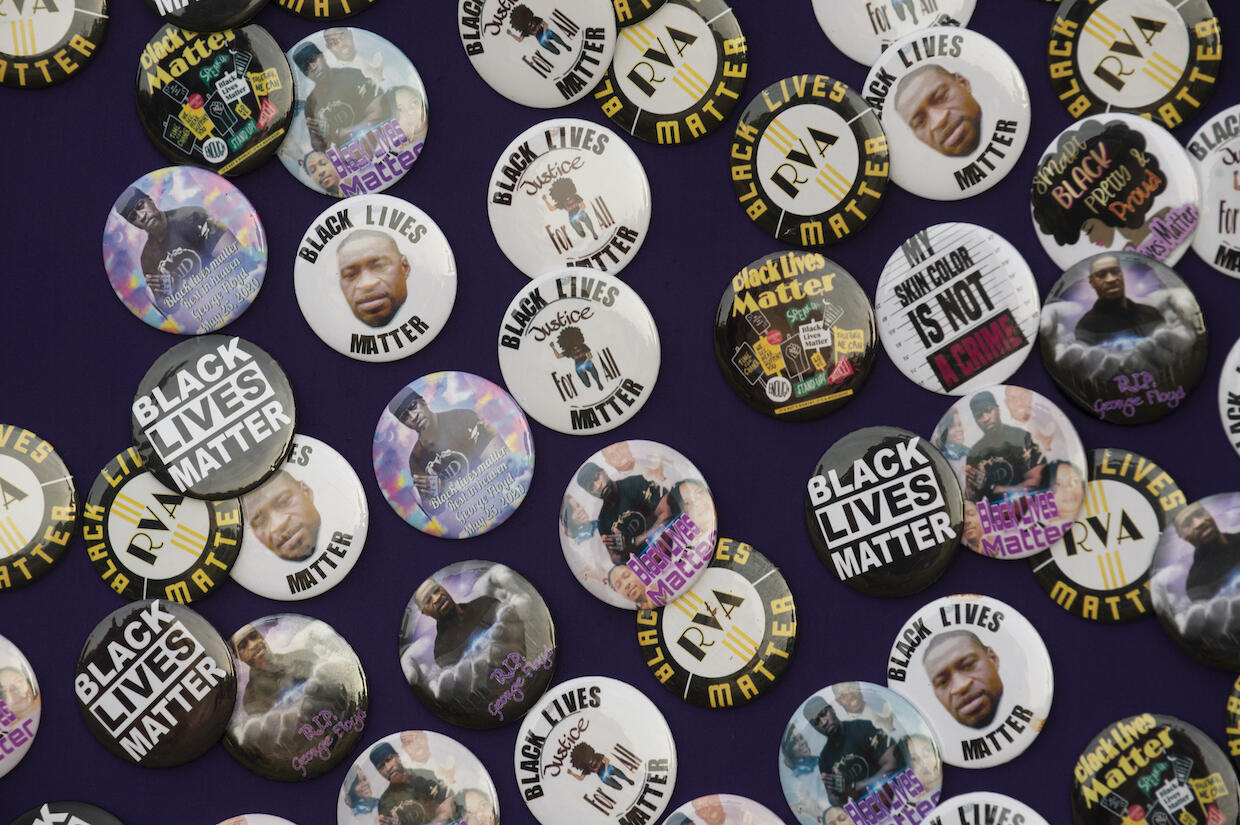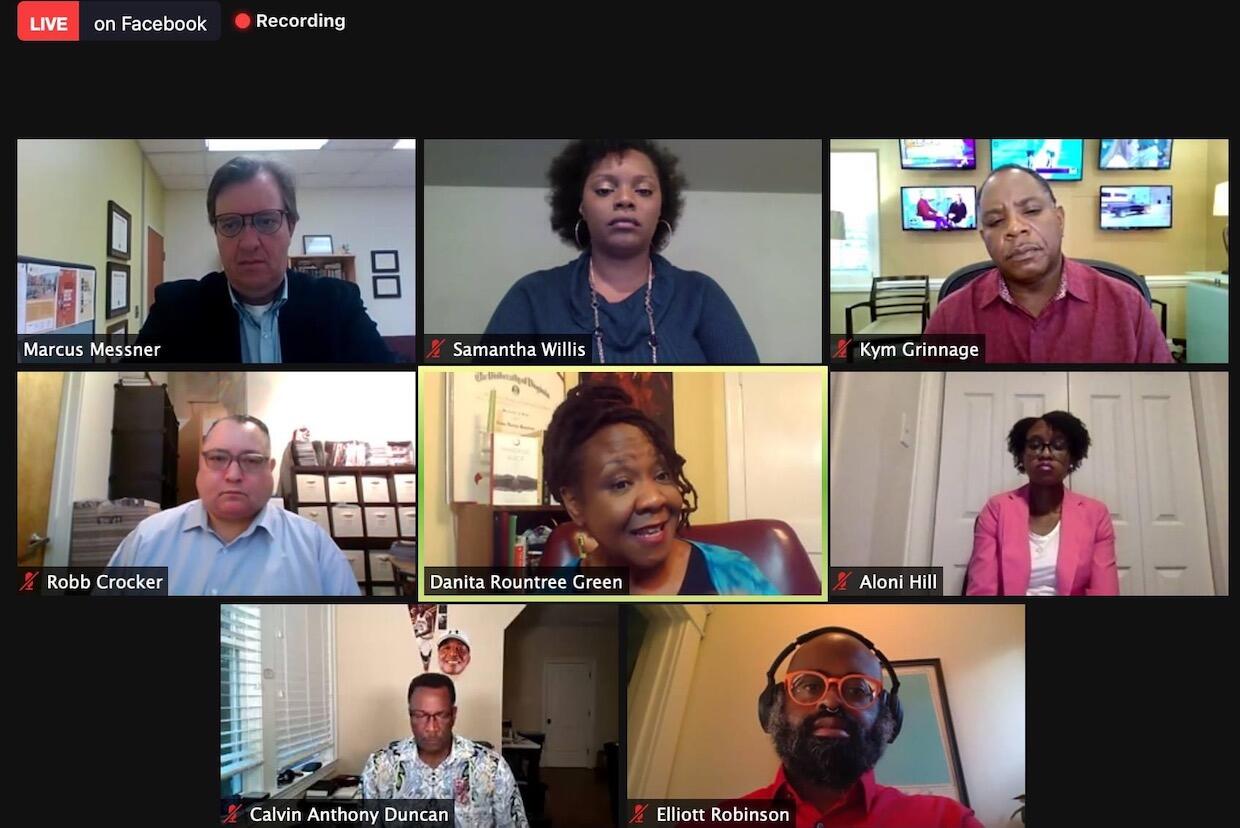
Oct. 7, 2020
Racial unrest, sports protests continue the ‘outcry for racial and social justice’
Share this story
Issues brought to the forefront by protests and racial unrest this year have created a rebirth of the civil rights movement, according to a panel of Richmond journalists and African American leaders.
The death of George Floyd brought race and racial issues to the forefront, Kym Grinnage, vice president and general manager at NBC 12, said Tuesday during an online forum hosted by the Richard T. Robertson School of Media and Culture in the College of Humanities and Sciences at Virginia Commonwealth University and the VCU chapter of the National Association of Black Journalists.
“Before the George Floyd murder, you would not hear the subject of racism talked about publically in media as well as in offices around the country and the kitchen table with different people of different races,” Grinnage said. “That was something that was pretty much taboo.”
Part of the reason for the change is the cellphone, he said. Anyone on the street can record events as they happen. Events can be captured that would have taken place in the past without being recorded prior to the widespread use of cellphones.
“Now the news was being covered not only by us but anyone who had a phone and could go live,” he said. “They could instantly be media. That meant there was no hiding when it came to talking about race.”
Danita Rountree Green, author and co-CEO of Coming To The Table-RVA, said the reason the protests occurred was because the United States has so much unfinished business. The COVID-19 pandemic exacerbated the situation.
“Race and racism is something our society has not risen to the challenge of truly addressing,” Green said. “Our country is demanding that we truly revive this issue, and we work toward meaningful change and progress.”
The panelists were disappointed that President Donald Trump did not clearly denounce racism during the first presidential debate. They said Americans, especially Black Americans, just want to be heard, but the president and Democratic nominee Joe Biden did not listen to each other.
“It is symbolic to how America is not hearing the African American people,” said Calvin Anthony Duncan, pastor and founder of the Faith and Family Church and a former VCU basketball player. “When people say, ‘Black lives matter,’ people respond with ‘All lives matter.’ People need to give us an opportunity to explain why we are saying it.”
Samantha Willis, an independent journalist and writer, said candidates for any political office must have the ability to discuss and address issues of race and racism. The community is crying out for political candidates to discuss these issues and find solutions.
“Racial and social justice came to the forefront when George Floyd was killed, but really there has been an outcry for racial and social justice for decades,” Willis said.

The panelists said the protests by former NFL player Colin Kaepernick, when he kneeled during the national anthem beginning in 2016, began to draw public attention to the issues of police violence and racial inequality. That led to more athletes becoming vocal about racism and inequality and generated more attention to the issues.
Duncan said he understands when people say they just want to watch sports and do not want politics and sports to mix. The public, he said, must realize that Black athletes are more than just sports figures; they are also human beings. Athletes who kneel are not disrespecting the flag, because it was never about the flag. It was a nonviolent way of protesting.
“The kneeling was about the fact that you are not hearing the debate,” he said. “You are not hearing our voices. We are seeing too many of our young Black men and women being murdered, and we need to share and say something.”
Grinnage said the media has done a good job reporting on the protests and racial issues in 2020, but disputed the term fake news. Trump likes to use the term, but the president seems to be referring to the mainstream media in general, Grinnage said. Fake news is news that is actually created to deceive people, like Russian propaganda. The information is based on partial truths and used to create confusion among the American people, Grinnage added.
Some people want the media to pay less attention to the president, but Grinnage believes the media should allow the public to decide about the president’s actions. The media has a responsibility to report the news and what is happening in the world.
He did, however, acknowledge that it took a long time for the media to call statements by the president lies. The idea of calling someone a liar goes against the norms of journalism, he said, and that made it difficult for journalists to directly confront what the president was saying.
“Journalists had to now change their protocols in the industry to do fact checking live all the time,” Grinnage said. “That has not happened in our lifetime, that somebody’s job is to say to the producer and then to the journalist, ‘here is the truth about what was just said.’”
Black Lives Matter and others are pressing issues that were talked about during the civil rights movement of the 1960s, the panelists said. These issues will not go away with the election next month.
“I don’t think anyone saw this coming, but one of the blessings of COVID was that everyone was turned to their TV, and they saw for nine minutes what pain looked like,” Grinnage said. “They were able to see nine minutes when someone says, ‘I can’t breathe,” what that looked like. They were able to see all the things that had happened since the civil rights movement where they might not have understood. Sometimes you are listening but not understanding.”
Subscribe to VCU News
Subscribe to VCU News at newsletter.vcu.edu and receive a selection of stories, videos, photos, news clips and event listings in your inbox.







